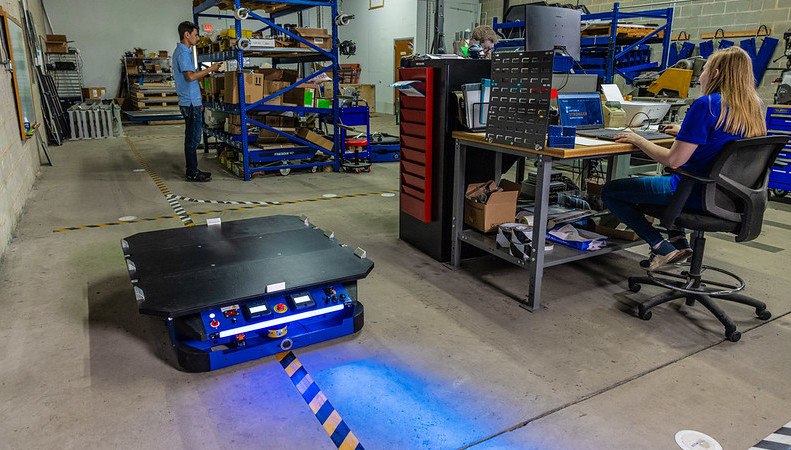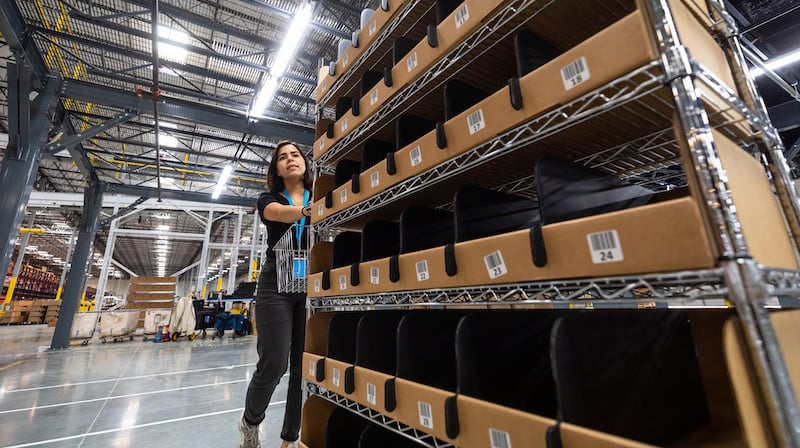Operations pros in warehousing and manufacturing are under constant pressure to increase productivity and efficiency. If only it were so simple.
So many complex, often competing factors influence performance: inventory accuracy, supply chain visibility, workforce management, safety and ergonomics, and keeping up with constant technological advancements in the industry.
Traditionally, many of those success factors were seen as separate, siloed issues. But the landscape is shifting—and tech advancements are accelerating the transformation.
Mobile computing has been essential to every facet of industrial modernization—and for this month’s Huddle, we dig into how mobility is reshaping industry. Joining me are my colleague, Keri Corbin, Barcoding’s Vice President of Client Solutions, and Eric Hilton, Barcoding partner Zebra Technologies’ Regional Portfolio Manager – North America.
As you’ll hear in the Huddle, our discussion revealed the wide-ranging benefits of integrating mobile computing into everyday industrial operations. It’s clear these technologies have evolved from a nice-to-have, advanced option to an essential for staying competitive and agile in a rapidly evolving sector. And at the center of it all are the people using the technology.
Let’s get right to it! Watch the Huddle for a closer look at how mobile computing has changed—and continues to influence—the very nature of work itself.
Mobility’s Industrial Evolution—From Nifty to Necessity
Handhelds, mobile devices, mobile computers…whatever name you choose to use for your rugged enterprise device, if you work in supply chain and have a role that requires you to capture and track data, chances are high that you spend most of your workday interacting with it. In fact, this layer of mobility infrastructure has become so widespread that we nearly take it for granted.
These days, as automation, robotics, and artificial intelligence are in the spotlight, it can be easy to dismiss the steadfast workhorse, the industrial mobile computer. And yet, we’re still discovering ways mobility adds value: optimizing data capture, streamlining processes, maximizing worker productivity, and improving employee satisfaction on the job.
And that’s important because, as quickly as automation is advancing, very few actual jobs can be entirely automated. On the whole, people aren’t being replaced. And since most businesses can’t simply automate their way out of the labor shortage, it’s critical that we optimize mobile computing to achieve these goals:
- Increase efficiency, to maximize the productivity of the workforce we have
- Improve the employee experience, to maximize the retention of that workforce
- Enhance human-technology interactions, to optimize collaboration between workers and technology
- Maximize and protect the data, to ensure integrity, security, and data-driven decision-making
While the path to digital transformation is paved with innovative technologies like Zebra's advanced mobile computing solutions, not everyone is an early adopter. And that’s where Barcoding’s #SupplyChainGeeks and our Process, People, Technology approach come in.
Help Users Make Optimal Use of the Tools & Tech They Have
Keri and Eric highlight the evolution of industrial mobile devices from extremely task-focused in their capabilities to what they are today. The devices themselves have undergone a digital transformation, powered by connectivity, ever-expanding capabilities, changing form factors, and the evolution of the operating system.
Where a worker used to simply use the device as a tool for its intended task, it’s now possible (and important!) to ask, “What else could this mobile computer help me accomplish?”
That doesn’t mean every organization finds itself in the same state when it comes to mobility. We see plenty of customers shifting tasks from pen-and-clipboard based workflows, or just beginning to introduce automation.
While future-proofing is going to require most businesses to integrate advanced technologies like machine vision and robotics into their processes and workflows, that evolution has to start with mobile computing.
And it’s in helping all customers—not just early adopters—that innovators like Zebra really get to demonstrate their chops. Mobile device adoption can be the critical starting point that gets end users and their employers asking the right questions and identifying opportunities.
Because streamlining workflows, eliminating extra steps, and making the workday safer and more satisfying…that’s what end user enablement is really about. From our conversation, here are four key ways mobility’s enabled the transformation.
1. Connectivity & Connection: Bridging Human Workers & Technology
Mobile computing serves as the bridge between administrative automation, industrial automation, and the human workforce. Connected devices enable people to interact seamlessly with data and automated systems, from virtually anywhere.
At this moment, when skilled labor is a scarce resource, that mobile device provides access, flexibility, and the ability for the human operator to stay in the loop and in control—whether it’s a worker on the floor interacting with physical inventory, or a worker in an office monitoring demand trends.
2. Customization & Flexibility: Tailored Solutions Meet Diverse Needs
Mobility’s inherent versatility is one powerful way it’s helping operations of all types and sizes to modernize. Different operations have unique demands, and mobile technology adapts well to meet varied requirements. Whether a business is in its early stages of digital transformation or it’s at the cutting edge, mobile solutions can be customized to fit perfectly and enable human users to add value.
This agility in solution design is not just about adapting to current needs but also about scaling for future growth, a hallmark of Zebra’s customer-first philosophy.
3. Securing the Data & Managing Devices Through End-of-Life
The digital transformation has also had a profound impact on the value of enterprise data—it’s now as valuable and crucial for success as physical assets. That makes device and data security more important than ever. And that points to the need for expertise in safeguarding sensitive data. While operational efficiency is key, it simply can’t come at the expense of data security.
That means keeping devices secure through every stage of the lifecycle, including end of life. Businesses need a strategy for device management, including end of life disposition, that ensures the security of enterprise data.
4. Ergonomics & User Experience: Maximizing Utility & Ease of Use
Device design can have a direct impact on worker efficiency and comfort—and that affects productivity. Ergonomics have come a long way since the days of the “two-pound bricks,” with end user enablement technologies like wearables that are designed to be comfortable enough to wear through a full-day shift.
But it’s not just smaller devices and bigger screens making a difference. Fewer screens, more subtle movements, voice-enabled technology, push-to-talk capabilities on a mobile device, and even wearable printers are helping improve worker safety and satisfaction right along with productivity.
Easy to use and intuitive, these devices aid in employee training, enhance retention, and ensure that technology complements rather than complicates the human element in industrial operations. In a work setting that incorporates gamification strategies, a great UX can help deliver a more immersive experience that truly engages workers, to boost productivity and job satisfaction all in one go.
Future-Proofing Through Modern Platforms
At this point in the digital transformation, no business can afford to be left behind. Fortunately, mobility is here to make it easier for companies of all sizes to adopt modern platforms, maintain a competitive edge, and future-proof their operations. Modern mobile computing’s impact goes well beyond operational efficiencies; it’s changing the very nature of work.
You can get started exploring the principles behind warehouse gamification, and get tips and best practices for implementing a gamified workplace that’s best suited for your unique operations—and more importantly, for your people. Just click below for your copy.







